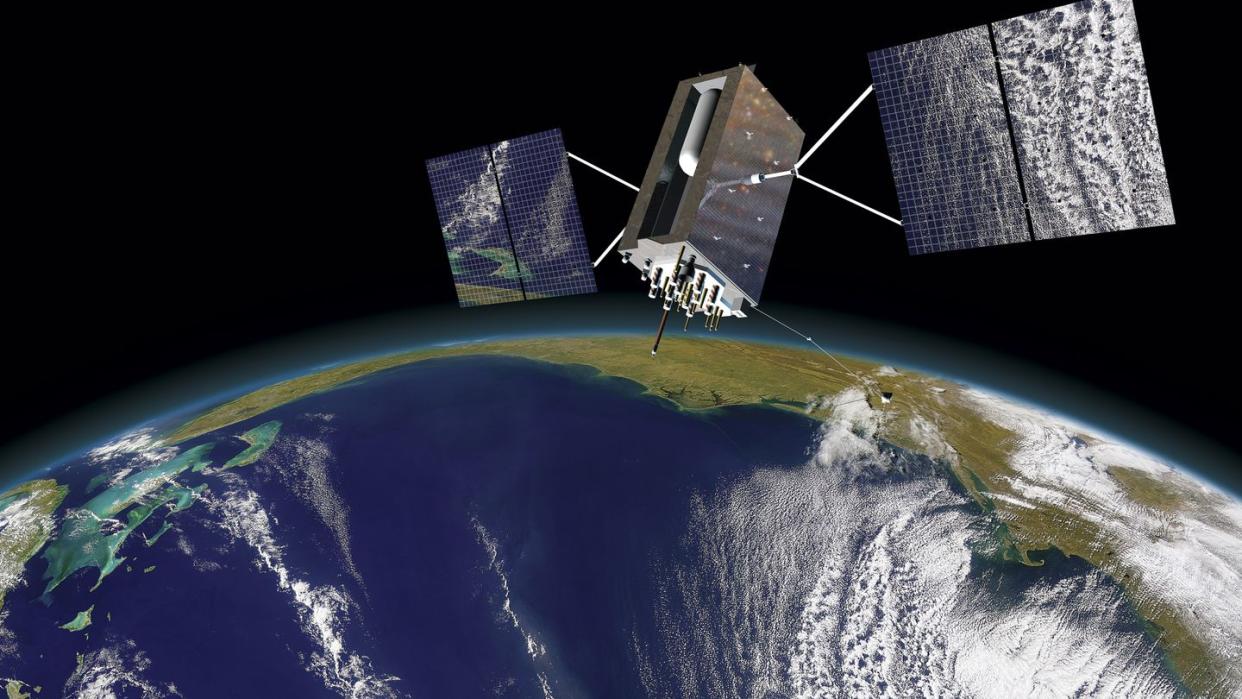Air Force to get a head start on GPS, target tracking efforts

The Air Force is using new authority from Congress to get a head start on two development efforts yet to be approved as part of a formal budget cycle.
Details on the programs are classified, but one is a Space Force initiative to improve the resilience of GPS satellites and the second is an Air Force effort related to developing a battle management system for moving target indication, or tracking mobile targets from air and space, the Air Force said in an April 16 press release.
“This initiative will leverage the success of rapid acquisition authority, marking a pivotal moment in advancing national security objectives with unprecedented speed and efficiency,” Air Force Secretary Frank Kendall said in the press release. “Quick Start will kickstart efforts intended to develop solutions to emerging problems, ensuring rapid progress from concept to implementation.”
Lawmakers approved the authority known as Quick Start in the Fiscal 2024 National Defense Authorization Act in December. Kendall championed the effort, floating the idea early last year before submitting a legislative proposal last April.
Quick Start allows the military services to get started on some programs before Congress has approved them — a prolonged annual process that often leaves high-need capabilities in limbo. Air Force officials have said the tool will allow the service to respond to new threats and take advantage of emerging technologies in real time.
While the Air Force is the first to use the authority, it’s available to each of the military services. And although there are no restrictions on how many programs can use the acquisition tool, the FY24 NDAA places a $100 million funding cap on the Defense Department’s annual Quick Start usage.
The law also requires that programs selected as part of Quick Start transition into a formal acquisition program or pathway within a year unless, at the discretion of the service secretary, a one-time extension is required. The two Air Force and Space Force programs selected for Quick Start are expected to be included in the service’s fiscal 2026 budget request, which the Pentagon won’t unveil until early next year.
While details on the initial efforts are classified, GPS resiliency and moving target indication are two priority efforts for the Air Force and Space Force.
In February, the Space Force reached out to the private sector seeking options for building a less expensive GPS satellite that can operate with the existing constellation, which includes 31 satellites. The newest of those spacecraft are built by Lockheed Martin.
Cordell DeLaPena, the program executive officer at Space Systems Command who oversees GPS development, said the Space Force is actively engaging with the private sector to understand how smaller GPS satellites or alternative technology could improve the military’s positioning, navigation and timing capabilities.
“We’re very interested in what the commercial market can bring,” he told reporters April 11 at the Space Symposium in Colorado Springs, Colo. “It’s going to be a gamechanger.”
The Air Force and Space Force have been working together to craft an architecture for moving target indication that uses both aircraft and satellites. The goal is to provide persistent surveillance to commanders on the ground.

